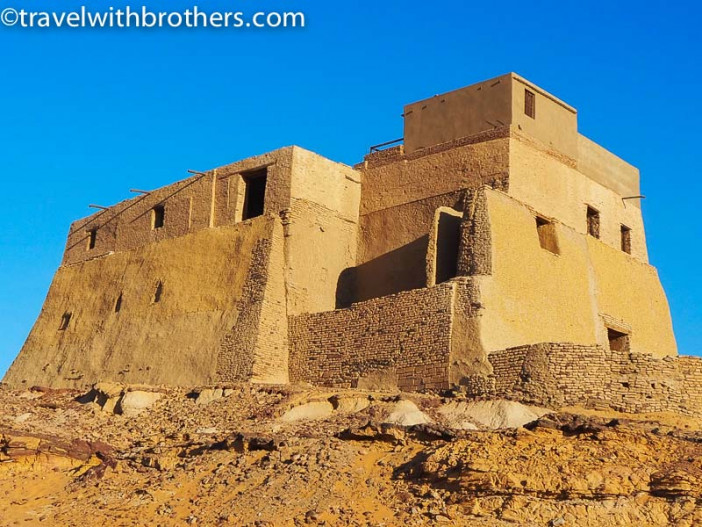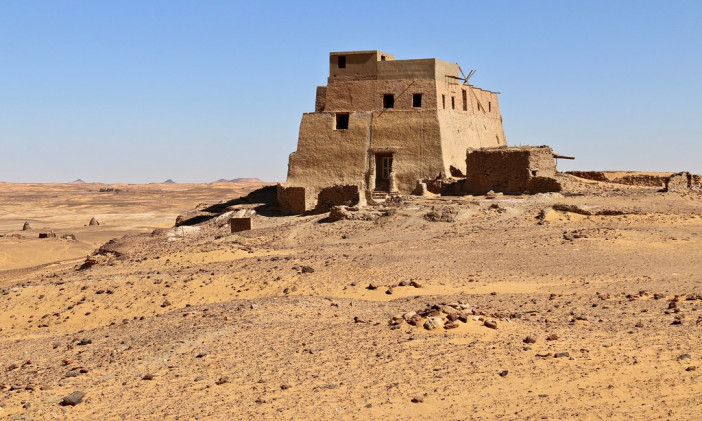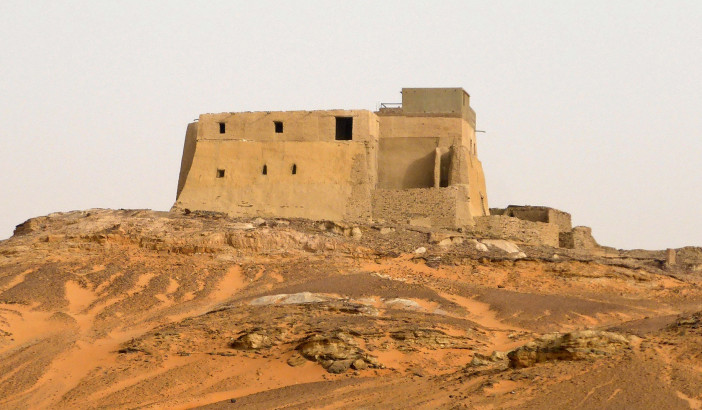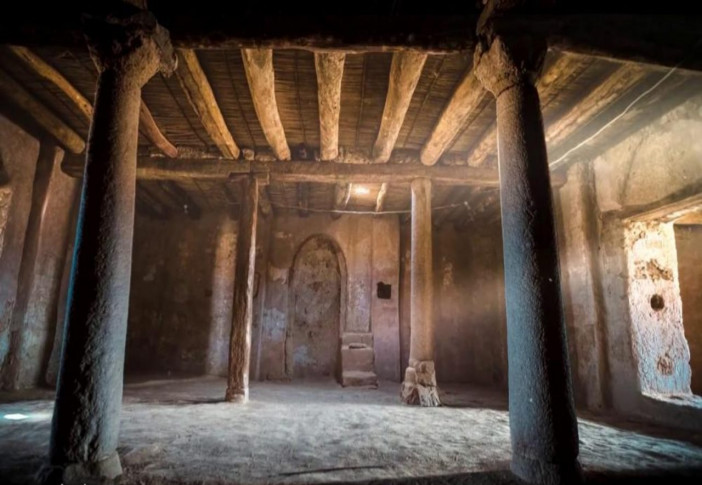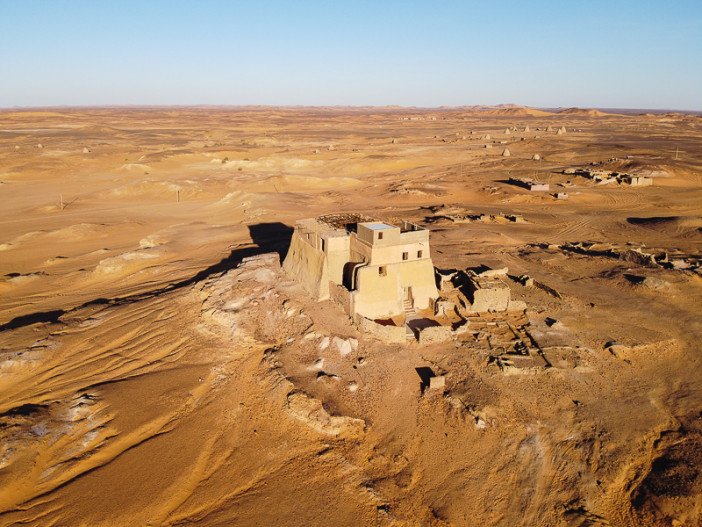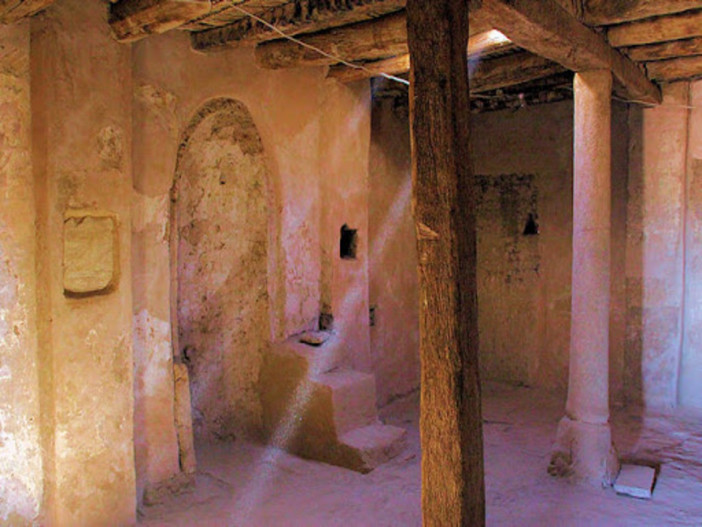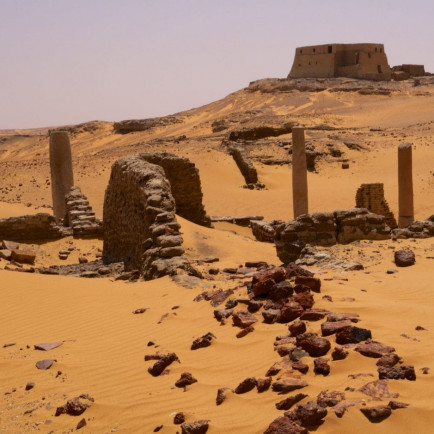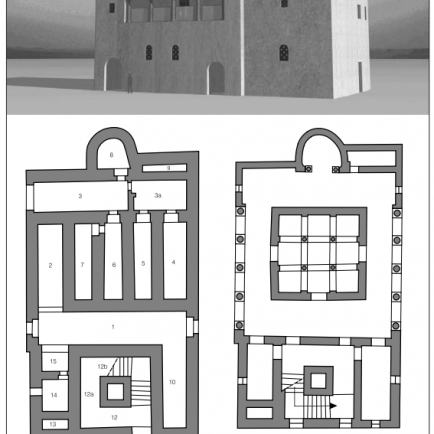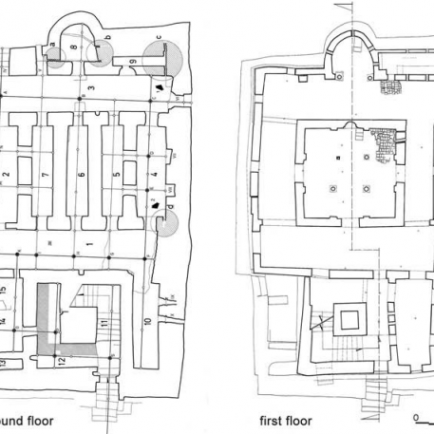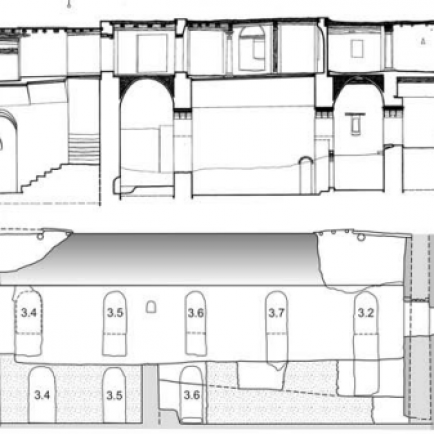The Mosque Building in Old Dongola
History
The Throne Hall of Dongola, also known as the Mosque Building, is an archaeological site in Old Dongola, Sudan. It is a two-storey brick building situated on a rocky hill, overlooking the town and the Nile valley. It was originally built in the 9th century, serving as the richly adorned representative building of the Makurian kings. In 1317, during the period of Makurian decline, it was converted into a mosque, serving this purpose until it was closed and turned into a historic monument in 1969. Shortly afterwards Polish archaeologists from the Polish Centre of Mediterranean Archaeology of the University of Warsaw began to excavate the building. It has been described as possibly "the most important, symbolic edifice in the medieval history of Sudan". It is presently the oldest preserved mosque in Sudan.
Urban and Architectural
The Mosque in Dongola can be seen from afar, especially from the Nile. It stands 12 m high on a rocky outcrop rising steeply from the desert at the edge of an extensive plateau, which extends east and south of the citadel and which is occupied by the ruins of the medieval town. The massive silhouette of this building recalls at first glance Pharaonic structures and seems more like a defensive building . Travelers have long described this large rectangular structure, 28 m by 18 m, as the only building in Dongola to have remained in use, even if with short breaks, from the times of Middle Makuria in the mid 9th century until recently
Description
References
https://en.wikipedia.org/wiki/Throne_Hall_of_Dongola
Details
Location
Old Dongola Sudan
Worshippers
200
Owners
The prince Barshambu
Year of Build
1317
Area
505
Drawings
Map
History
The Throne Hall of Dongola, also known as the Mosque Building, is an archaeological site in Old Dongola, Sudan. It is a two-storey brick building situated on a rocky hill, overlooking the town and the Nile valley. It was originally built in the 9th century, serving as the richly adorned representative building of the Makurian kings. In 1317, during the period of Makurian decline, it was converted into a mosque, serving this purpose until it was closed and turned into a historic monument in 1969. Shortly afterwards Polish archaeologists from the Polish Centre of Mediterranean Archaeology of the University of Warsaw began to excavate the building. It has been described as possibly "the most important, symbolic edifice in the medieval history of Sudan". It is presently the oldest preserved mosque in Sudan.
Urban and Architectural
The Mosque in Dongola can be seen from afar, especially from the Nile. It stands 12 m high on a rocky outcrop rising steeply from the desert at the edge of an extensive plateau, which extends east and south of the citadel and which is occupied by the ruins of the medieval town. The massive silhouette of this building recalls at first glance Pharaonic structures and seems more like a defensive building . Travelers have long described this large rectangular structure, 28 m by 18 m, as the only building in Dongola to have remained in use, even if with short breaks, from the times of Middle Makuria in the mid 9th century until recently
Description


